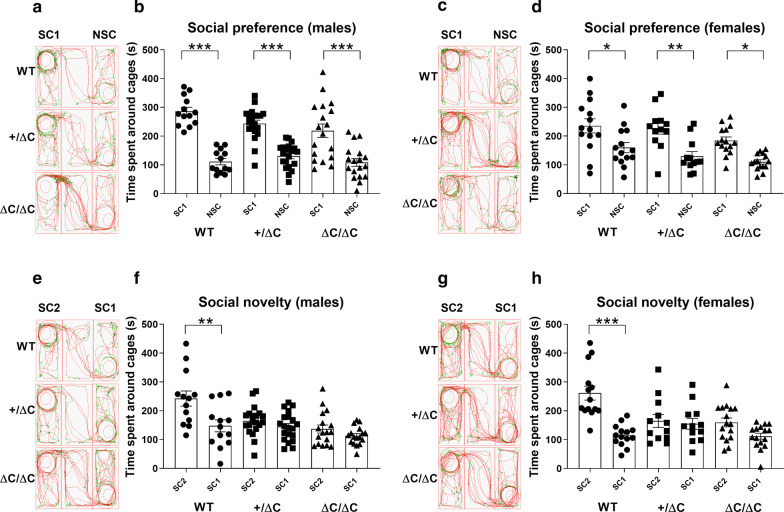Fig. 1.
Social preference in Shank3 mice assessed through the three-chambers test (3-CT). a–c–e–g Representative tracks of mice in the 3-CT. b–d–f–h Social behavior analysis. b–d. Following habituation, mice were put in the 3-CT with one chamber containing an encaged mouse (social chamber 1: SC1) and one chamber with an empty cage (Non-social chamber: NSC) to evaluate social preference. Note that all mice, whatever the sex and the genotype, spent more time in SC1 than in NSC. f–h Then, a novel mouse was introduced in the chamber 2 (social chamber 2: SC2) in addition to the encaged mouse in SC1 to evaluate social novelty recognition. Note that Shank3 ΔC/ΔC and Shank3+/ΔC mice of both sexes spend equal time interacting with the novel mouse in SC2 than with the mouse in SC1. In comparison, wild type mice spent more time interacting with SC2 than with SC1. All data are expressed as means ± SEM; One-way ANOVA followed by Tukey’s multiple analysis was performed (*p < 0.05, **p < 0.01, ***p < 0.001). WT males n = 13; Shank3+/ΔC males n = 20; Shank3 ΔC/ΔC males, n = 18; WT females n = 14; Shank3+/ΔC females n = 12; Shank3 ΔC/ΔC females, n = 16

